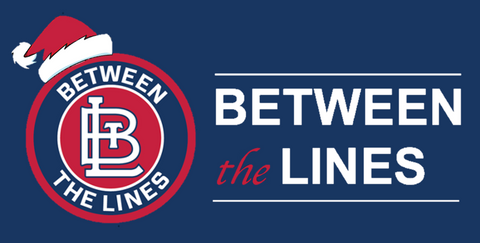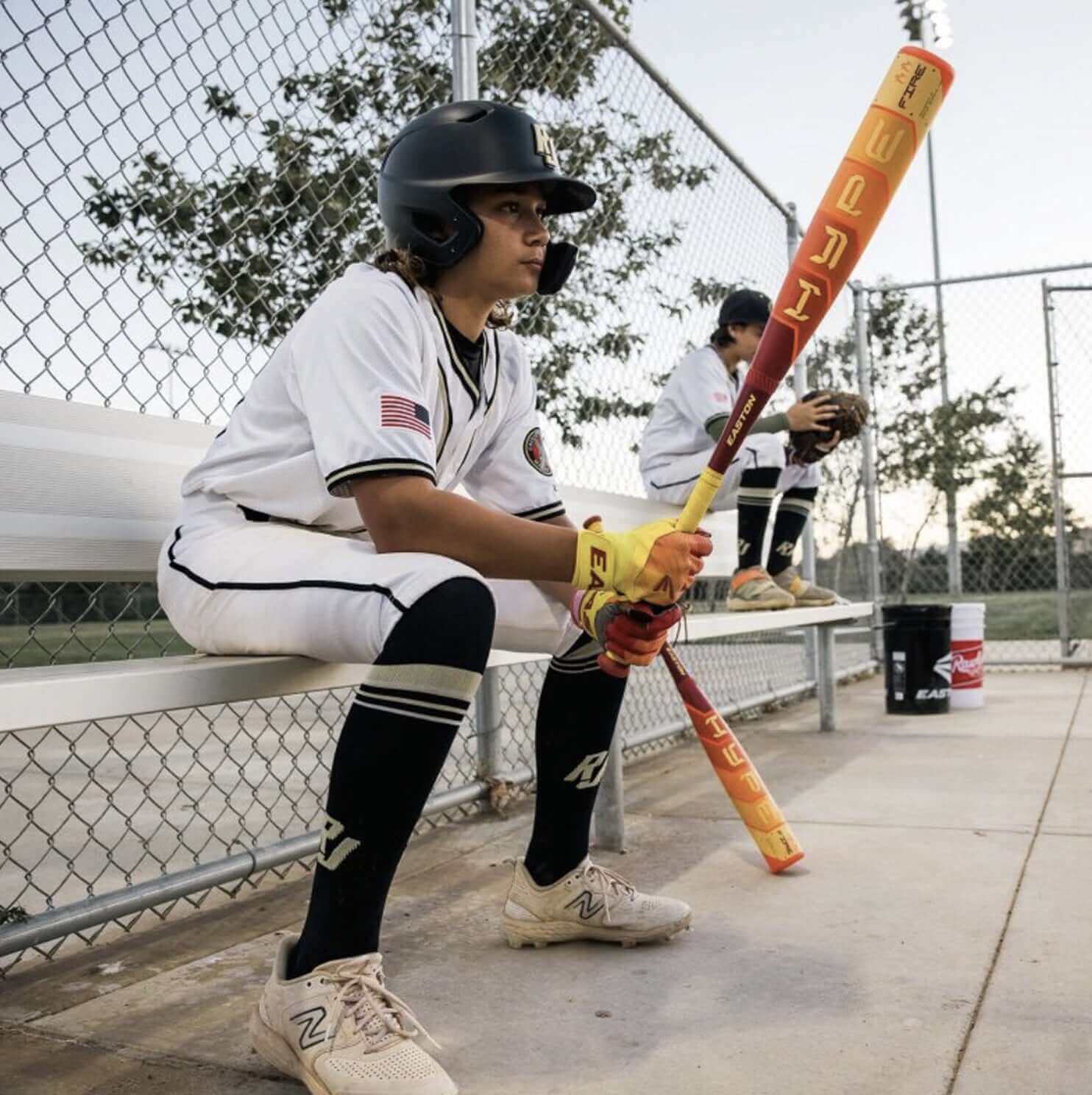Choosing the right baseball bat is a critical decision for any player, regardless of their level of experience. Whether you're a beginner just starting out or a seasoned player working toward advanced competition, having the correct bat can make a significant difference in your performance on the field. At Between The Lines, we are dedicated to helping you select the best baseball bat based on your personal needs, league requirements, and performance goals.
In this comprehensive guide, we'll delve deep into the key factors involved in choosing a baseball bat, including sizing, understanding league-specific standards like USA, USSSA, and BBCOR bats, and determining the right material. Our aim is to equip you with the knowledge you need to feel confident in your choice, ensuring you’re ready to step up to the plate with the best bat for your game.
Why Bat Sizing and Type Matter
Choosing the right bat is about much more than comfort; it directly affects your swing mechanics and power, which are crucial in improving your overall performance. Using the wrong bat—whether it's too heavy, too light, too long, or too short—can lead to poor hitting mechanics, reduced control, and even injury. A bat that’s too long or heavy might slow down your swing, while a bat that’s too light could limit the power behind your hits.
Additionally, league regulations differ across age groups and levels of play, so choosing a bat that meets your league’s specifications is crucial. Most leagues regulate the type of bat that can be used, meaning the wrong bat could result in penalties or disqualification from games. Let’s explore the different league-specific bat standards in detail.
Understanding League Requirements
One of the first things to consider when choosing a bat is the type of league you or your child will be playing in. Different leagues have specific regulations on the types of bats allowed. These regulations are primarily in place for safety reasons and to ensure fair play.
USA Baseball Bats
- Who Uses Them: Players in Little League, Pony Baseball, Cal Ripken Baseball, Babe Ruth League, Dixie Youth Baseball, and other major youth baseball organizations.
- Age Group: Typically for players aged 14 and under.
- Key Features: USA baseball bats are designed to mimic the performance of traditional wood bats while offering increased control. These bats generally have larger sweet spots, making them more forgiving for younger players. They are also lighter than wood bats, which makes it easier for kids to swing and connect with the ball.
- Length-to-Weight Ratio: The length-to-weight ratio for USA bats typically ranges from -10 to -13, with younger players using lighter bats. This ratio refers to how many ounces lighter the bat is than its length in inches.
- Why It Matters: Because USA bats are built with a focus on control and a balanced feel, they help young players develop proper hitting mechanics while maintaining a safe level of power. The lighter weight and larger sweet spot are ideal for younger players still developing their swing.
USSSA Bats
- Who Uses Them: Players in competitive travel ball leagues and youth leagues that are not governed by USA Baseball.
- Age Group: Usually for players aged 7 to 14.
- Key Features: USSSA bats are designed with performance in mind, often featuring a higher trampoline effect. This allows the ball to spring off the bat with more energy, resulting in greater distances. USSSA bats generally have a larger barrel diameter (up to 2 ¾ inches) and a lower drop weight, meaning the bat is heavier for more powerful swings.
- Length-to-Weight Ratio: Ranges from -5 to -12, depending on the player’s age and strength. Younger players might prefer a lighter bat, while older players, especially those transitioning to higher levels of competition, may opt for heavier models.
- Why It Matters: USSSA bats offer an advantage to skilled players who want to maximize their hitting distance and power. However, because of their design, these bats are not allowed in leagues governed by USA Baseball, making it crucial to choose the right bat for the specific league.
BBCOR Bats
- Who Uses Them: High school and college players.
- Age Group: Typically for players aged 14 and older.
- Key Features: BBCOR (Batted Ball Coefficient of Restitution) bats are designed to replicate the feel and performance of wood bats, offering a reduced trampoline effect. These bats are heavier, with a maximum drop weight of -3, and are engineered to limit the ball’s exit velocity, making the game safer and more controlled at higher levels of play.
- Length-to-Weight Ratio: Always -3, meaning these bats are heavier than those used in youth leagues.
- Why It Matters: BBCOR bats are mandatory in high school and college leagues due to safety concerns. They’re built for players who have developed strength and control, offering a more challenging but rewarding experience for older athletes.
For more detailed information on BBCOR bat certifications and performance standards, visit NCAA Baseball or the NFHS.
Determining the Right Bat Length and Weight
Now that you understand the different types of bats based on league requirements, the next step is selecting the correct bat length and weight for optimal performance.
Age-Based Length Recommendations
A great starting point for choosing a bat is to look at general age-based recommendations for bat length. Here’s a basic guide:
| Age | Recommended Bat Length |
|---|---|
| 5-7 years | 24” - 26” |
| 8-9 years | 26” - 28” |
| 10 years | 28” - 29” |
| 11-12 years | 30” - 31” |
| 13-14 years | 31” - 32” |
| 15-16 years | 32” - 33” |
However, age is only a general guideline. Your player’s height, weight, and strength are just as important when choosing the right length.
Height and Weight Considerations
Taller or heavier players within an age group may need a longer bat to accommodate their swing mechanics. Conversely, shorter or lighter players might find a shorter bat easier to control. For example, a player who is taller than average for their age group might benefit from a bat that’s at the upper end of the recommended length range.
Swing Speed and Strength
In addition to age, swing speed and strength are crucial factors to consider. Younger players often perform better with lighter bats, which allow them to develop faster swing speeds and better control. Conversely, more advanced or older players may prefer heavier bats, as they can generate more power behind their swings.
Players who are stronger and have higher swing speeds can benefit from a slightly heavier bat because it gives them more power when making contact. However, it’s important not to go too heavy, as this can hinder bat speed and overall performance.
Selecting the Right Bat Material
The material of the bat can also affect a player’s performance. There are three primary materials to consider: aluminum, composite, and wood.
Aluminum Bats
Aluminum bats are the most common choice for younger players and those in amateur leagues. These bats are durable, lightweight, and easy to swing, making them ideal for players just learning the game. Aluminum bats also have a faster break-in period and require less maintenance than their composite counterparts.
Composite Bats
Composite bats are made from layered materials and are designed to offer a larger sweet spot with reduced vibrations. These bats are popular in both USSSA and BBCOR leagues. However, composite bats often require a break-in period to reach their full potential and can be more expensive than aluminum options.
Wood Bats
Wood bats are generally required at higher levels of play, particularly in professional leagues. They offer a traditional feel and are prized for their balance and power. Wood bats are often used by players transitioning from youth leagues to high school or college, where BBCOR standards are in place.
Testing the Bat
Once you've narrowed down your choices based on league rules, material, and sizing, it’s time to test the bat to ensure it’s the right fit.
The Arm Test
Hold the bat by the handle and let it hang down by your side. If the bat’s knob reaches the center of your palm when your arm is fully extended, the bat is likely the right length for you.
Swing Test
Take several practice swings with the bat. The bat should feel comfortable and easy to control. If it feels too heavy or too light, you may want to adjust the length or weight.
Balance Test
Hold the bat straight out in front of you with one hand. If you can hold it steady for about 10 seconds, the bat is likely the correct weight.
Conclusion: Gear Up with Confidence
Choosing the right baseball bat is an essential step in setting yourself up for success on the field. Whether you’re in a youth league, travel ball, or high school competition, selecting a bat that meets league standards, fits your body, and complements your swing is crucial for maximizing your performance.
At Between The Lines, we are committed to providing you with the best possible guidance when it comes to selecting your gear. Whether you’re browsing online or visiting our store, our team of baseball experts is ready to help you find the perfect bat for your game. Explore our full range of USA, USSSA, and BBCOR bats and make sure you’re prepared for the season ahead.
Need Help? Our team is here to answer any questions and help you find the perfect bat. For personalized advice or more information, contact us or visit our store in Scottsdale today!
Frequently Asked Questions
What is the difference between USA and USSSA bats?
USA bats are designed to mimic wood bats and are commonly used in youth leagues with a focus on safety and control. USSSA bats, on the other hand, are designed for performance, offering a higher trampoline effect for more power and distance.
How do I know if my bat is BBCOR certified?
BBCOR-certified bats are required to have a “BBCOR” stamp on them, ensuring they meet the performance standards set by high school and college leagues.
What bat length should I choose for my 10-year-old?
For a 10-year-old, a bat between 28” and 29” is typically recommended, but the right choice may vary based on height, weight, and strength.
Do composite bats require a break-in period?
Yes, composite bats usually require a break-in period of about 200-300 hits to reach their maximum performance.
Are wood bats allowed in youth leagues?
While wood bats can be used in some youth leagues, they are less common due to their weight and smaller sweet spots. Many leagues require USA or USSSA-approved bats.
What does drop weight mean?
The drop weight refers to the difference between the length and weight of the bat. For example, a bat that is 30 inches long and weighs 20 ounces has a drop weight of -10.
References



